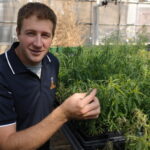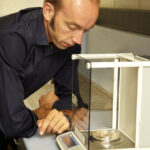evolution
The adaptive value of flowering time in wild radish (Raphanus raphanistrum)

This paper demonstrates that an early flowering time adaptation does not come at a growth cost when in competition with wheat. Flowering time however did result in an increasing number of flowers being located below the harvest cutting height. As the early flowering wild radish does not come at a competitive cost, it needs to be managed through diversity in both management tactic and timing.
Evolved Resistance to Glyphosate in Junglerice (Echinochloa colona) from the Tropical Ord River Region in Australia

The objective of this study was to determine whether a jungle rice population from the tropical Ord River region of northwest Australia was glyphosate-resistant and whether alternative herbicides labelled for jungle rice control were still effective. Seed samples collected from the field site were initially screened with glyphosate in the glasshouse, and surviving individuals were self-pollinated for subsequent glyphosate dose-response studies. Glyphosate resistance was confirmed, as the suspected resistant population was found to be 8.6-fold more resistant to glyphosate than a susceptible population-based on survival (LD50 of 3.72 kg ha21), and 5.6-fold more resistant based on biomass reduction (GR50 of 1.16 kg ha21).
Recurrent selection with reduced 2,4-D amine doses results in the rapid evolution of 2,4-D herbicide resistance in wild radish (Raphanus raphanistrum L.)

When used at effective doses, weed resistance to auxinic herbicides has been slow to evolve when compared with other modes of action. Here we report the evolutionary response of a herbicide-susceptible population of wild radish (Raphanus raphanistrum L.) and confirm that sublethal doses of 2,4-dichlorophenoxyacetic acid (2,4-D) amine can lead to the rapid evolution of 2,4-D resistance and cross-resistance to acetolactate synthase (ALS)-inhibiting herbicides.
Identification of Triazine-Resistant Vulpia bromoides

In Australia, triazine herbicides have routinely controlled the Vulpia species (Vulpia bromoides, Vulpia myuros, and Vulpia fasciculata; collectively referred to as silvergrass). However, a simazine-resistant silvergrass biotype, collected from Pingelly in the Western Australian grain belt in 2014, has been confirmed.
Directional selection for flowering time leads to adaptive evolution in Raphanus raphanistrum (Wild radish)

Herbicides have been the primary tool for controlling large populations of yield depleting weeds from agro-ecosystems, resulting in the evolution of widespread herbicide resistance. In response, nonherbicidal techniques have been developed which intercept weed seeds at harvest before they enter the soil seed bank.
A potential role for endogenous microflora in dormancy release, cytokinin metabolism and the response to fluridone in Lolium rigidum seeds

Lolium rigidum (annual ryegrass) is a widespread annual crop weed that has evolved high levels of resistance to selective herbicides. Anecdotal evidence suggests that intensive cropping also leads to higher seed dormancy in L. rigidum. This was quantified by measuring dormancy levels in L. rigidum populations collected from paired sites (one with nil to low cropping intensity, the other intensively cropped) located throughout the Western Australian grain belt.
No fitness cost of glyphosate resistance endowed by massive EPSPS gene amplification in Amaranthus palmeri

Amplification of the EPSPS gene has been previously identified as the glyphosate resistance mechanism in many populations of Amaranthus palmeri, a major weed pest in US agriculture. Here, we evaluate the effects of EPSPS gene amplification on both the level of glyphosate resistance and fitness cost of resistance.
Identification of the first glyphosate-resistant wild radish (Raphanus raphanistrum L.) populations

In Australia, glyphosate has been used routinely to control wild radish (Raphanus raphanistrum L.) for the past 40 years. This study focuses on two field-evolved glyphosate-resistant populations of wild radish collected from the grainbelt of Western Australia.
Evolved polygenic herbicide resistance in Lolium rigidum by low-dose herbicide selection within standing genetic variation

The interaction between environment and genetic traits under selection is the basis of evolution. In this study, we have investigated the genetic basis of herbicide resistance in a highly characterized initially herbicide-susceptible Lolium rigidum population recurrently selected with low (below recommended label) doses of the herbicide diclofop-methyl.
Cross-resistance to prosulfocarb and triallate in pyroxasulfone-resistant Lolium rigidum

Plants can rapidly evolve resistance to herbicide in response to repeated selection. This study focuses on cross-resistance patterns observed in Lolium rigidum following pyroxasulfone recurrent selection.
1 2


